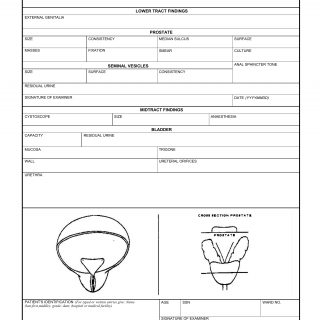DA Form 3824. Urologic Examination
The DA Form 3824, also known as the Urologic Examination form, is used to document and record the results of a urologic examination. This form is typically utilized in medical settings by healthcare professionals, such as urologists or primary care physicians, to assess and evaluate the urinary system and related conditions.
The form consists of sections that capture important information related to the urologic examination. These sections include patient information, medical history, physical examination findings, diagnostic tests performed, and treatment recommendations. In the patient information section, details such as name, age, gender, and contact information are recorded. The medical history section allows for documenting relevant information about the patient's past medical conditions, surgeries, medications, and family history. The physical examination findings section provides space to record observations and findings from the urologic examination, including palpation, inspection, and auscultation. Additionally, there are fields to document the results of diagnostic tests, such as urine analysis, imaging studies, or urodynamic testing. Finally, the form allows for recording treatment recommendations, including medication prescriptions, referrals, or further.
When filling out the DA Form 3824, it is crucial to accurately record all relevant information. Healthcare professionals should ensure that patient details are correctly entered, and findings from the urologic examination are clearly documented. It is important to provide sufficient details about the examination findings and diagnostic test results to facilitate proper diagnosis and treatment planning. The form may be filled out by the healthcare professional who conducted the urologic examination or by designated personnel responsible for compiling and maintaining the patient's medical records.
An example application of the DA Form 3824 would be in a urology clinic or hospital setting where patients are referred for urologic evaluations. By using this form, healthcare professionals can systematically document the findings from the urologic examination, which can then be used for diagnosis, treatment planning, and monitoring of urologic conditions. The form also serves as a valuable tool for communication among healthcare providers involved in the patient's care and ensures comprehensive documentation of the urologic evaluation.

